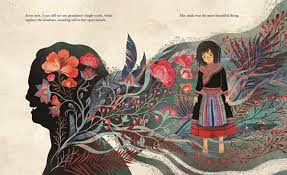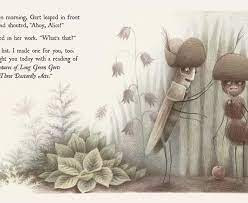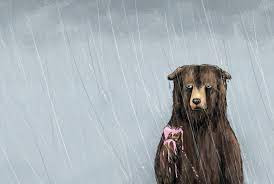"Daylight comes, but storm clouds blot
out the sun. The birds have been flying
for eighteen hours now, with no land in
sight. Weaker birds use up the last of
their reserves and fall into the stormy
seas. Other birds keep flying. They claw
at the wind, fighting to stay above the
deadly waves. The Cerulean is one of
them."
This is a bird migration story that combines fact and fiction to describe Owen's attempt to have his family make their home yard a place for wildlife, especially birds where they will find safety and sustenance. Last year, Owen and his sister Nora welcomed a Cerulean Warbler, a very rare sight in their vicinity. They are hoping it will return.
Owen and Nora's tale in told on alternating pages, with the pages in between offering clear information about the migration story of the birds themselves. The family, led by Owen, have worked to keep the old trees and plant new native flowering trees to encourage birds to stop. There are now birds aplenty, but only one warbler. They keep journals describing their visitors, while holding out hope for that one special bird to arrive.
There is much to learn on the pages in between about the migration of a variety of birds as this story moves forward. It is often an arduous journey, made more perilous by terrible weather. Still, they fly on. At school, Owen shares what is happening with the migrating birds and answers questions from his classmates - and his worry about the tiny warblers. The story continues as the warbler returns with a mate, makes the yard their summer home, and allows for further learning by Owen's family and their observations. Perhaps they will return in following summers.
An author's note offers the genesis of this informative book. Mr. Collard then finishes with instructions for becoming a birder, ideas for protecting birds, and a list of resources to help readers learn more. Thomas Brooks does a fine job of telling both parts of the story in lovely images. His watercolor artwork allows readers to experience the difficulty of the birds' journey, the beauty of the avian visitors, and the welcome habitat that Owen's family has created.



























































